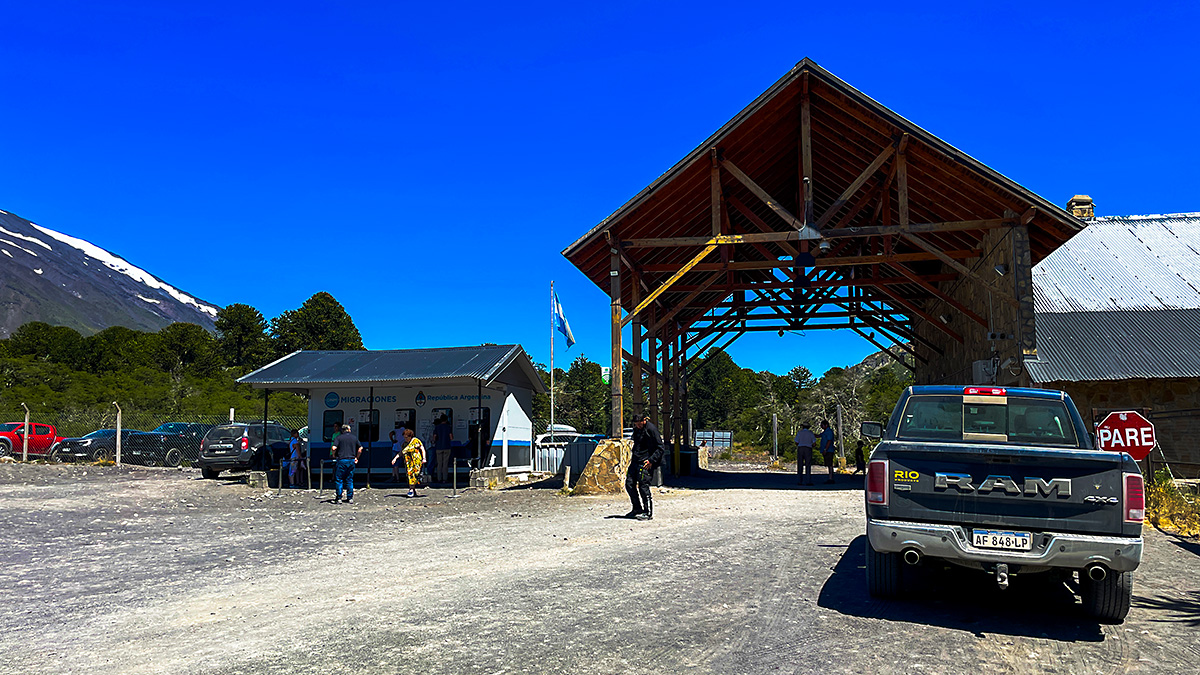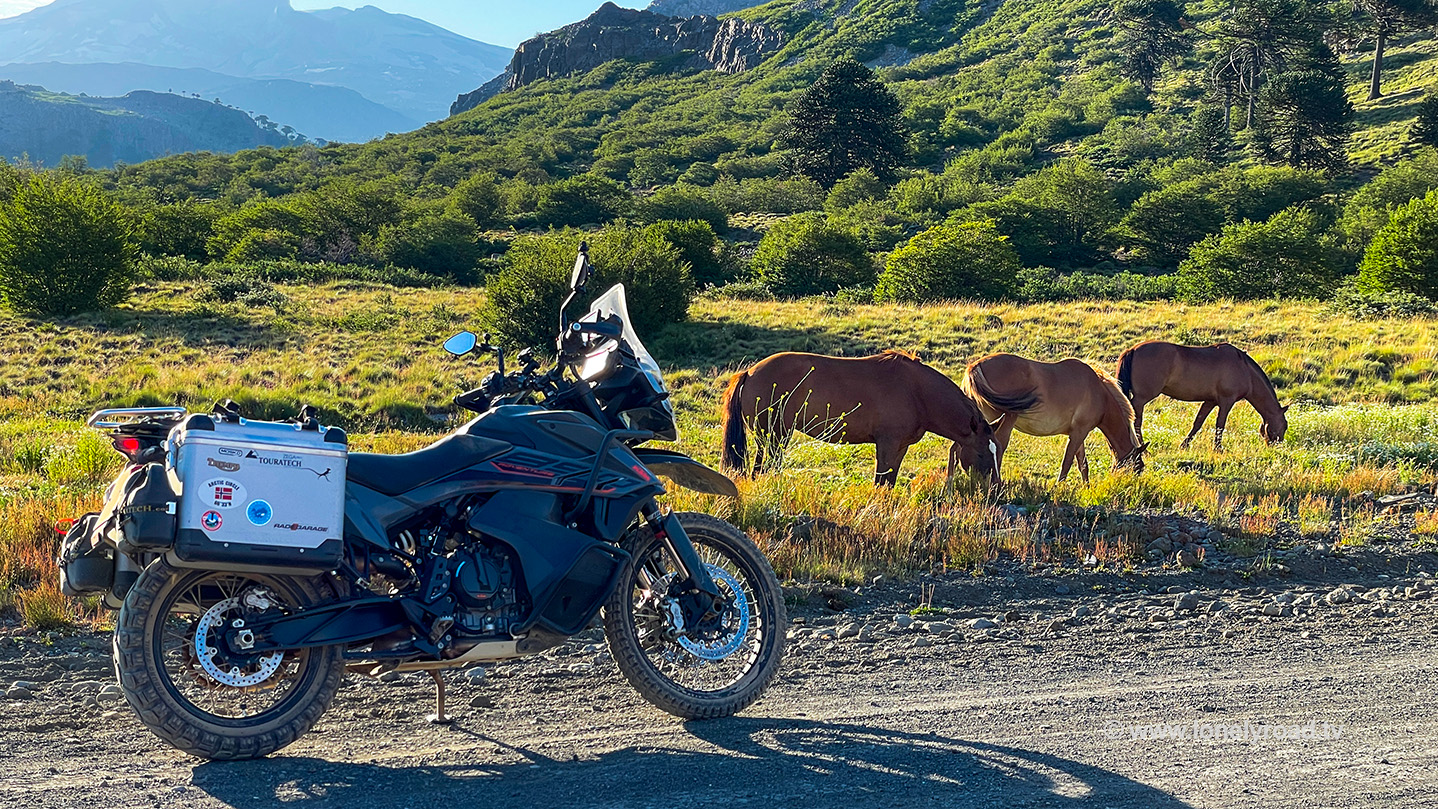Border Crossing - Paso Tromen Ó Mamuil Malal, Argentina to Chile

Crossing Date: 22 January 2024
Direction: Argentina to Chile
Altitude: 1,253m
Vehicle: UK-registered motorcycle
People: 1
Total time: 45 mins
Rating: 4/5 (smooth)
Paso Tromen Ó Mamuil Malal is one of several crossings between the Argentinian and Chilean lake districts. It is the most direct route from Argentina to the popular tourist town of Pucon in Chile.
The Process
The Argentinian border post is located about 47km from the junction with Ruta 23. Most of the road is sealed, but it switches to gravel for the last 11km after you enter the Parque Nacional Lanin - Lago Tromen.
The facilities on the Argentinian side are modern and fairly well organised. As you enter the area, you pass by a toll-booth style structure where you collect a slip of paper. This is used to hold the various stamps required, and ultimately needs to be handed over to the officials to exit the area once all the formalities have been completed.
First step is to exit Argentina for immigration purposes. A series of windows which resemble a theme-park ticket office sit on the west side of the carpark. After dealing with your passport, the officials will stamp one box on your slip of paper. You then need to proceed to Customs in the main building to the right.
Customs is a simple procedure, where the temporary import permit (TIP) for your vehicle is cancelled and the second box on your paper slip is stamped. From there, you return to your vehicle and follow the track past the building to the exit 'toll-booth'. Here you hand over your completed stamped slip and continue into no-man's land between the Argentinian and Chilean border stations.
The Chilean facility is about 1.5km down the road through a pretty forest of Monkey Puzzle trees. As always, you can tell when you cross the actual border as the pavement starts once you hit Chile.
The Chilean building is unmissable as it straddles the entire road. Officials direct you to an appropriate parking location nearby and you then enter the building to complete both immigration and Customs formalities and a series of numbered windows. Immigration is first, which involves a passport stamp and a printed slip of paper with a QR code. It's necessary to keep hold of this as it's required when you later want to exit Chile.
Customs is a two-part process: firstly, obtaining a TIP for your vehicle, and secondly, making a declaration to the agricultural customs function. The latter can be done with a paper form, or online via the Chilean customs website - QR codes are on display with the link. It's quicker and easier to do the declaration online, and it can be done ahead of your arrival at the border. The online process delivers a reference number which you present to the customs officer to show you've made your declaration. Agricultural customs will also likely want to do at least some level of search on your vehicle.
Once the search is complete, your good to go and there are no further checkpoints or gates to pass.
How it Went for Me
I rode from San Martin de los Andes on a beautiful summer day. The sealed part of the route to the Argentinian border post passes through some spectacular scenery. The views continued to be great as I hit the national park entrance, but the gravel road was rough, dusty, and heavily corrugated.
After eventually bouncing into the border facility, I missed the fact I needed to collect the paper slip from the booth as I entered (partly as it looked like it was unmanned to me). Not a major problem though, as I was able just to walk up to the window and obtain one. From there the rest of the process was quick and painless. No queues at the immigration window, and only perhaps a five-minute wait at customs.
The exit was clear in my direction, but there was a extremely long queue of vehicles trying to enter from the Chilean side, putting a bit of strain on the officials manning the booth. Fortunately I was able to quickly hand over my stamped slip and be on my way.
Arriving at the Chilean facility, I was directed to park near the border building. Inside, there was a short queue for immigration, which fortunately, moved quite quickly. There was less queuing needed to obtain my Chilean TIP, which itself was a very straightforward process.
For the Agricultural customs, I'd completed my declaration online, but initially struggled to find an officer to show it to. Eventually I did, and he informed me that I needed to put my bags through the scanner - the first and only time in 12 border crossings on this trip I was asked to. The officer informed me I could move my bike closer to the door, then scan the bags. After I'd moved the bike, I'd unstrapped my rear duffle and was just about to open the first pannier to pull out the inner bag when the customs officer said only the duffle needed to be scanned. It quickly went through the machine without issue. It was then a cursory look in my two panniers before I was waved on my way.




